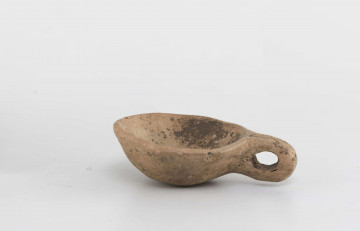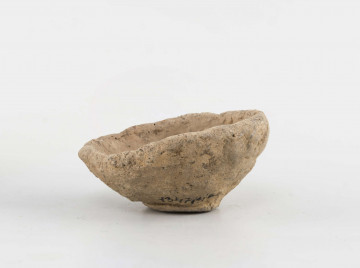
Mug
National Museum in Lublin
Part of the collection: Archaeological monuments of the Lublin region
The described monument is a small clay vessel discovered by archaeologists in the town of Stok, in the Puławy poviat. It was there, that around 5,000 years ago the Neolithic people of the Funnelbeaker Culture, who lived in this area, established a cemetery.
In 1951, a team of employees of the Archaeological Department of the Lublin Museum, led by Dr. Jan Kowalczyk, conducted research in this area. Then, while exploring the discovered cemetery, the described flask with a ruff was found in one of eleven graves. It was located in the grave marked with the number IIa, as a funerary equipment. It was located at the right tibia of one of the two individuals buried in a common grave. However, it was not the only finding within the grave. Archaeologists also managed to obtain a bone dagger and small flint tools.
Flasks with a ruff are characteristic vessels of the Funnelbeaker Culture. Their form may vary; not all of them, like the presented item, have a handle and legs, but they are always distinguished by a ruff - that is, a plastic strip visible below the spout.
It is this specific shape of the vessel that suggests to many researchers that it could be used for specific purposes. If we turned the presented vessel over, we would get a shape similar to a poppy seed head. According to the researchers the notched ruff reflects the incisions made on the poppy seed in order to obtain the juice from which the opium is made.
It is therefore likely that the flasks with the orifice could have been used as storage containers for substances for treatment or narcotics. Opium can be used both as an intoxicating agent and as an analgesic.
Author / creator
Dimensions
cały obiekt: height: 10,2 cm
Object type
dish
Technique
firing
Material
clay
Creation / finding place
Owner
The National Museum in Lublin
Identification number
Location / status

National Museum in Lublin

National Museum in Lublin

National Museum in Lublin
DISCOVER this TOPIC
National Museum in Lublin
DISCOVER this PATH
Educational path